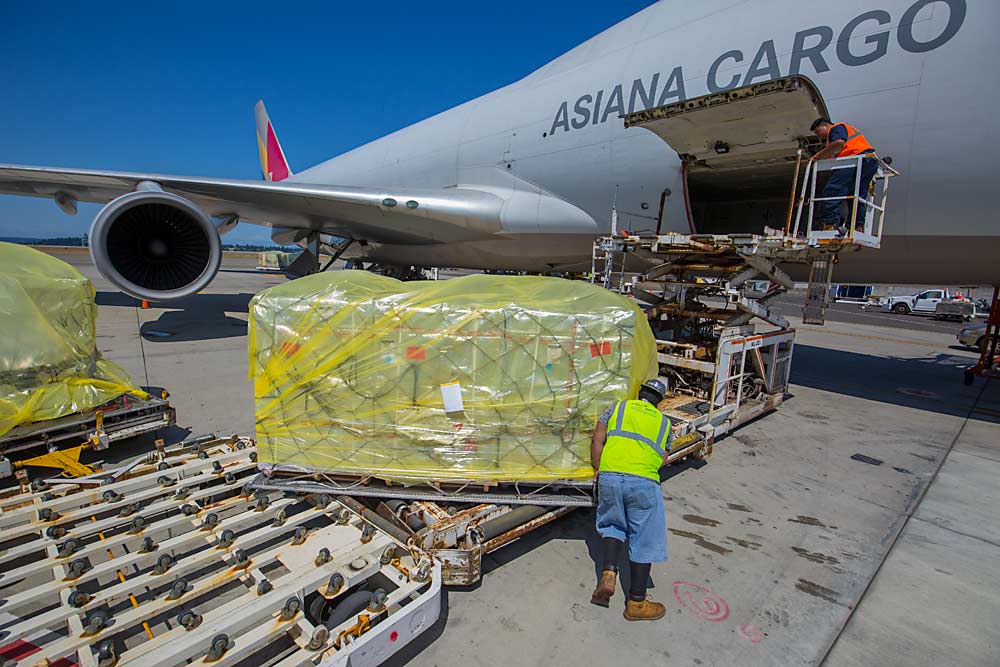
Tree fruit farmers must routinely manage dozens of pests that make fruit unmarketable or that suppress tree growth and overall production. The Food and Agriculture Organization (FAO) of the United Nations estimates that 20 to 40 percent of global crop production is lost each year due to pests, with plant diseases costing the global economy $220 billion. In the Pacific Northwest, growers must protect fruit from injury by 33 direct insect pests (those that feed directly on the fruit), 47 indirect insect pests (feed on the tree), two common bacterial pathogens, eight fungal pathogens, 10 viral pathogens and five phytoplasmas and viroids (virus-like plant pathogens). Another seven postharvest diseases act as limiting factors to long-term storage, with fruit decay and repacking due to postharvest disease costing the fruit industry millions of dollars in losses each year.

More than $1 billion worth of apples, cherries and pears in the Pacific Northwest is exported annually to markets around the world. In 2019, 28.3 percent of apples, 26.6 percent of pears, and 28.2 percent of sweet cherries produced in the region were exported. To be successful in this endeavor, growers and shippers must be aware of the rules and regulations in each of the foreign countries with whom they engage in trade, to ensure uninterrupted delivery and distribution of fruit to these markets.
Pesticide maximum residue limits (MRLs), known as pesticide tolerances in the U.S., are one such consideration. An MRL identifies the maximum concentration of a pesticide residue that is legally permitted in food commodities and animal feeds, ensuring that food is safe for consumers and public health is protected. Each MRL is specific to a pesticide/crop combination, so an MRL for any one pesticide may be different for different crops in the same country.
Beginning in 1963, the FAO established the Codex Alimentarius as a standard-setting body for the establishment of MRLs that could be harmonized internationally among a broad array of countries, with a goal of ensuring fair practices in international food trade. Recent history, though, has seen a movement away from international harmonization of MRLs, with many countries instead opting to establish their own “MRL positive lists.”
This results in a trade landscape much tougher to navigate where countries have vastly differing MRLs for the same pesticide/crop combination. Additionally, not all pesticide/crop combinations have an established MRL in every market. These “missing” MRLs are addressed differently in individual countries; some defer to an MRL established by Codex and others do not permit any detectable residue for that pesticide.
MRL compliance involves much more than just choosing crop protection products that a destination market may prefer. Growers must know which products are most efficacious at preventing injury, the yield and storage implications in selecting one product over another, how long a product’s efficacy in controlling the target pest lasts after application, and which market the fruit will be shipped to. Growers must also have different management plans for individual blocks within their larger orchard for fruit being shipped to different markets (when that destination market is known), and how to prevent cross-contamination in the growing/packing/shipping of fruit for different market destinations.
When a country performs residue tests on imported food and determines that there is an MRL noncompliance violation, the entire shipment of fruit may be rejected at an estimated cost between $30,000 and $40,000, depending on several variables. Redirection is costly and complicated. If the fruit is of sufficient quality following the initial shipping time, plus time spent awaiting a determination in the first destination port, redirecting the shipment to another country (approximately $4,000 in shipping) will result in further declines in fruit quality. The result: an increased possibility of rejection in the new destination, or cost adjustments if the fruit is still of sufficient quality.
If the shipper can divert the shipment to a less restrictive country in a timely manner, losses due to decline of fruit quality are expected in the $6,000 range, depending on variables. If the shipper is unable to divert the shipment to a less restrictive country, they will be responsible for the additional costs of removal and destruction of the fruit. There is no arrangement or insurance that guarantees compensation for the specified loss or damage incurred to financially injured parties.
The United States International Trade Commission (ITC) recently produced a two-volume study that is available on the ITC website entitled, “Global Economic Impact of Missing and Low Pesticide Maximum Residue Levels.” It details the impacts of uneven application of MRLs in international trade. The ITC report finds that missing and low MRLs are increasingly affecting trade by restricting exporters’ ability to sell crops where an MRL is set lower than in their domestic market, particularly if the MRL is so low that it is difficult for producers to meet while still protecting their crops from harmful insect and disease pests.
Maximum residue limits for pesticides on fruit have become extremely dynamic. Countries regularly modify their MRL positive lists depending on political and regulatory actions of each individual country. Tree fruit producers must be knowledgeable of pesticide MRLs for numerous foreign markets throughout the growing season to be able to select and appropriately time use of multiple pesticides targeting control of a variety of insect and pathogen pest organisms.
The Northwest Horticultural Council maintains an MRL database specific to standards in the U.S. and 82 markets around the world for apple, pear and sweet cherry that can be accessed by growers and packers through the council’s website (nwhort.org/export-manual). The database is linked to the Washington State University Decision Aid System, which delivers comprehensive, time-sensitive information for pest management of Pacific Northwest tree fruits to growers and field personnel making real-time decisions in the field regarding weather and all insects and disease pathogens listed in WSU’s “Crop Protection Guide,” as well as information on pesticide product choice, pesticide product efficacy rating for the pest of concern, and MRLs for pesticides chosen for designated foreign export markets directly.
—by David Epstein
David Epstein is the vice president for scientific affairs at the Northwest Horticultural Council. He can be reached at epstein@nwhort.org.






Leave A Comment